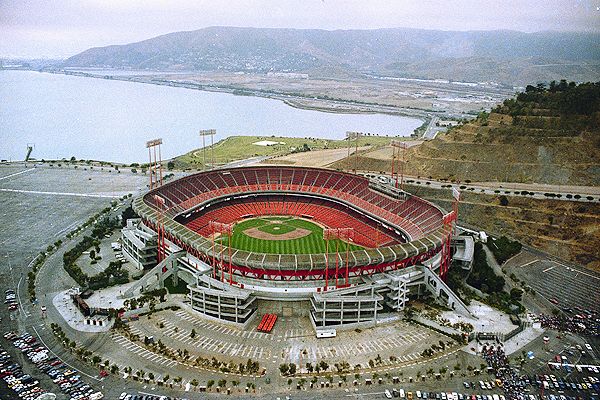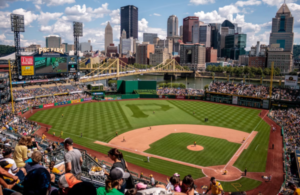- Pro Maple Composite Wood Hybrid L180 Bat by AXE: A ReviewPosted 6 years ago
- Book Review: Heroes, Scamps and Good GuysPosted 7 years ago
- Book Review: Baseball Before We Knew ItPosted 7 years ago
- Book Review: Omar!Posted 7 years ago
- Book Review: A Deadly GamePosted 7 years ago
- Book Review: The Manager’s DaughterPosted 9 years ago
- Baseball in the Garden of Eden, A Book ReviewPosted 14 years ago
Five Energy Efficient Ballparks Inspire Energy Savings at Home
- Updated: December 11, 2013

Views: 71
Ballparks serve not only as a place for a community to rally around a team, but they also foster community pride and a commitment to invest in the surrounding areas. With this in mind, ballpark managers strive to use energy responsibly. The Green Sports Alliance has been dedicated to greening America’s ballparks for the last 10 years. From solar panels to living architecture, energy costs have become more manageable while offsetting the carbon footprint in the neighborhood.
Your home energy rates are no exception. In fact, you may have more power than you realize to bring costs down. Take a cue from these energy efficient ballparks to learn where you can save more.
1. Target Field in Minneapolis, Minnesota
Photo by Randy Stern via Wikimedia Commons
Natural Resources Defense Council’s Sports Greening Project featured the stadium in one of their cases studies to highlight innovative energy efficient gold standards. Not only are they recycling their waste to be reused at the stadium, they save approximately $6,000 per year on high-efficiency lighting. Target Field’s architectural plans were created to reduce energy use of the entire community by including soft rail and bus terminals directly at the stadium.
2. Citi Field in New York, New York
Photo by Metsfan84 via Wikimedia Commons
Urban heat islands are a huge energy strain during the hotter months in densely populated areas like New York. To answer this, the NY Mets installed a green roof in the stadium. They’ve managed to reduce overall energy use and cut down on water and solid waste in the process according to The New York Mets organization. If you own a large apartment building or extensive estate, a green roof could help significantly curb stormwater and divert waste according to Green Roofs Organization.
3. PNC Park in Pittsburgh, Pennsylvania

alpineinc via Wikimedia Commons
The Pirate’s organization has made a ballpark wide effort to go green boasting more than 100 different types of recycled materials that are later used to fuel the park. Throughout their cost saving retrofits, the stadium has been able to save 3 to 5 percent more energy each subsequent year. To help educate people at home on how they can save energy and reduce their carbon footprint, the PNC Foundation has donated money to community projects such as the New School For Sustainability and Environment. To go beyond energy saving basics at home, the JouleBug app is a great resource to search around your home to discover if you’re putting your best carbon footprint forward.
4. AT&T Park in San Francisco, California

Photo by Coasttocoast via Wikimedia Commons
The first MLB park to receive LEED silver certification, the Giants received the honor because of their drastic cut to energy use by installing park-wide efficient lighting. Most noteworthy of their energy saving push is their new scoreboard, which is 80 percent more efficient. To further curb usage, the organization installed motor-sensed lighting paths along with infrared-lit concourse signage.
5. Marlins Park in Miami, Florida

Photo by Roberto Coquis via Wikimedia Commons
This ballpark knows how to stay local from sourcing 60 percent of their building materials within a 500-mile radius. Their coolest energy efficient feature is the retractable roof installed to control temperature shifts. To cut down on energy used to operate, a regenerative drive system does it for less than $10.
This guest post was written by Don Sims
Don is a sports enthusiast from Dallas.










